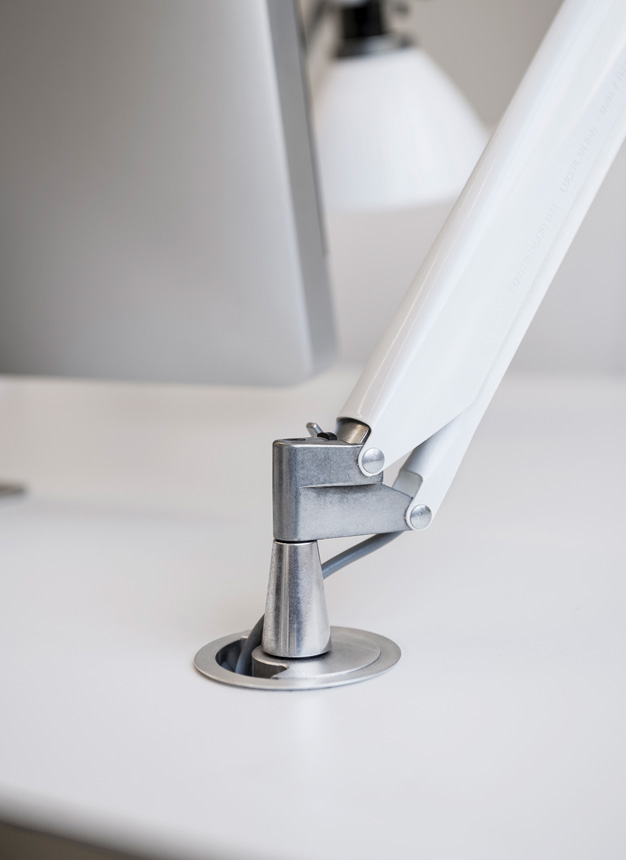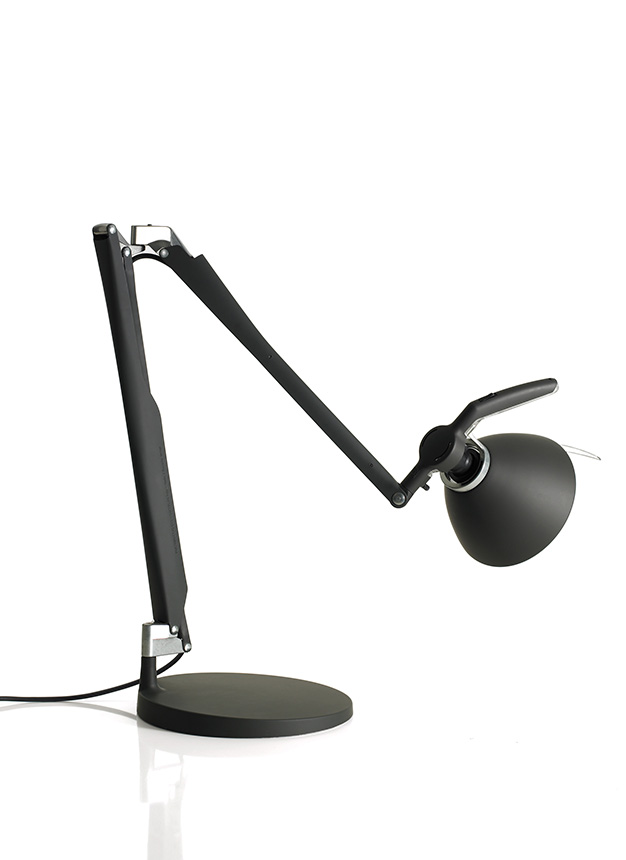FortebraccioTable
designed by Alberto Meda, Paolo Rizzatto
Fortebraccio sets new standards of efficiency and practicality for desk lamps. The central joint allows the two arms to rotate independently on the horizontal and vertical axes, guaranteeing great fluidity of movement even in extreme and unusual positions. The polycarbonate grip enables users to maneuver the lamp simply and manageably.
Models
D33N.100
Fortebraccio

D33N.100
Fortebraccio
Main specifications
| Typology | Table | ||
|---|---|---|---|
| Application | Indoor | ||
| Material |
|
||
| Finishes |
|
||
| Dimensions (mm) | L arm base: 440, arm head: 355 | ||
| Weight (kg) | 1.23 | ||
| Light Source | LED filament E27, max 70W HSGSA E27 | ||
| Insulation Class | II |
Download


Equipped with different accessories, Fortebraccio can be installed everywhere








